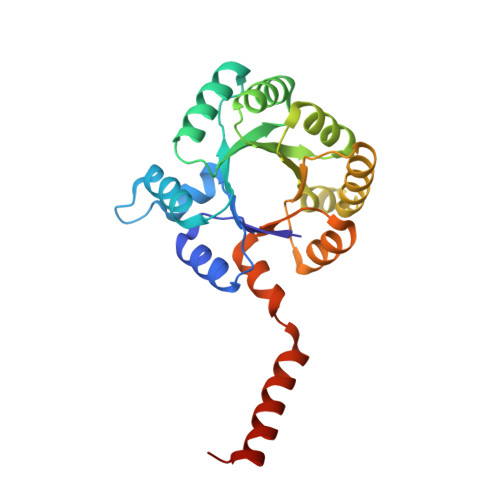Twisted Schiff base intermediates and substrate locale revise transaldolase mechanism.
Lehwess-Litzmann, A., Neumann, P., Parthier, C., Ludtke, S., Golbik, R., Ficner, R., Tittmann, K.(2011) Nat Chem Biol 7: 678-684
- PubMed: 21857661
- DOI: https://doi.org/10.1038/nchembio.633
- Primary Citation of Related Structures:
3S0C, 3S1U, 3S1V, 3S1W, 3S1X - PubMed Abstract:
We examined the catalytic cycle of transaldolase (TAL) from Thermoplasma acidophilum by cryocrystallography and were able to structurally characterize--for the first time, to our knowledge--different genuine TAL reaction intermediates. These include the Schiff base adducts formed between the catalytic lysine and the donor ketose substrates fructose-6-phosphate and sedoheptulose-7-phosphate as well as the Michaelis complex with acceptor aldose erythrose-4-phosphate. These structural snapshots necessitate a revision of the accepted reaction mechanism with respect to functional roles of active site residues, and they further reveal fundamental insights into the general structural features of enzymatic Schiff base intermediates and the role of conformational dynamics in enzyme catalysis, substrate binding and discrimination. A nonplanar arrangement of the substituents around the Schiff base double bond was observed, suggesting that a structurally encoded reactant-state destabilization is a driving force of catalysis. Protein dynamics and the intrinsic hydrogen-bonding pattern appear to be crucial for selective recognition and binding of ketose as first substrate.
Organizational Affiliation:
Albrecht-von-Haller-Institut and Göttingen Center for Molecular Biosciences, Georg-August-Universität Göttingen, Göttingen, Germany.
















